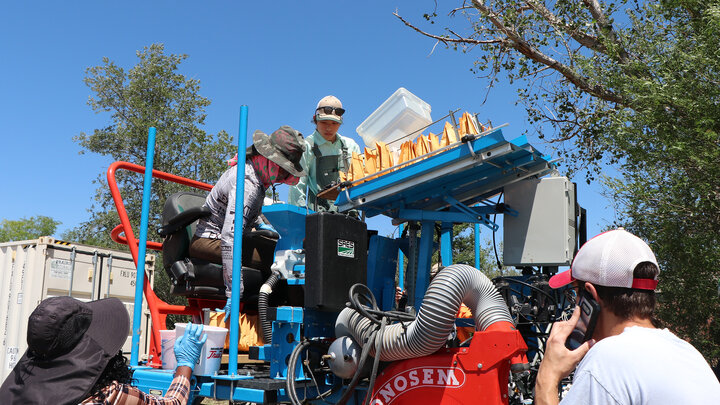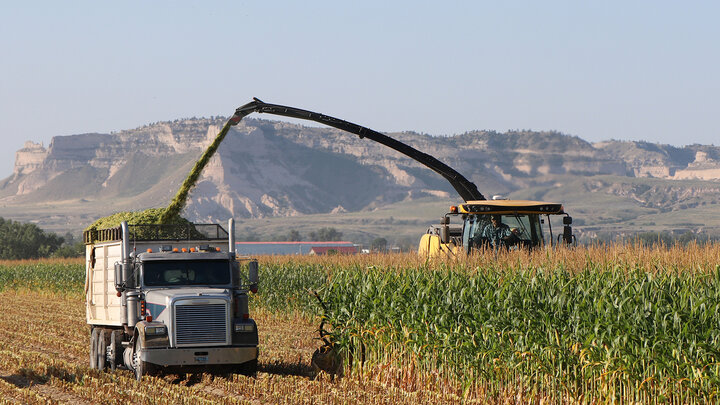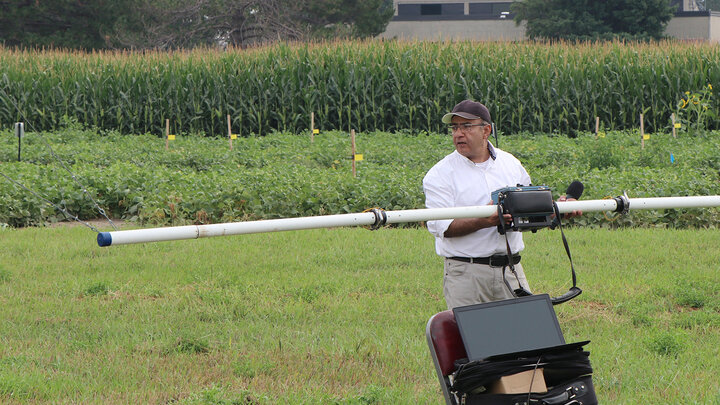Hail pummeled crops in the Scottsbluff and Mitchell area on June 29, as a thunderstorm moved from the west to the east.
“The hail came in well before Scottsbluff in a swath of about four and a half to five miles wide,” said Colby Goatley, forecaster at the National Weather Service in Cheyenne, Wyo. “Hail was reported at 2.3 inches before Scottsbluff and just under two inches at 1.75 inches.”
The hail, accompanied by wind gusts of up to 60 mph, struck the University of Nebraska-Lincoln's Panhandle Research Extension and Education Center, decimating the research fields surrounding the campus. The fields are divided into small plots, where extension specialists conduct research projects on a variety of crops. Most of the crops had a month or more of growth when the hail hit.
“We lost every field project that we had this year, consisting of diseases of sugar beets, sunflowers, dry beans, chickpeas, lentils, and corn,” said Bob Harveson, Nebraska Extension plant pathologist. Other crops lost include spring pea and camelina. The millet crop was planted the week before the hailstorm.
“We could still lose the millet because of stagnant water and crust,” said Dipak Santra, Nebraska Extension alternative crops breeding specialist. “We may consider replanting the millet if no or poor emergence. But such late planting will reduce yield significantly.”
Pin-Chu Lai, Nebraska Extension entomologist, has already replanted her dry bean plot. “We will be collecting a lot more data besides yield throughout the growing season to monitor thrips activities. The trial will be late, but having bean plants that are behind to work with will be better than losing the whole trial and a growing season with no data.”
Many of the crops lost are typically harvested in July, such as spring peas and camelina; however, others like chickpeas and dry beans can be planted this late. Replanting the dry beans in July means they may not mature before the first freeze.
“I’m not replanting, it would be too late and the (dry) beans would only be at the flowering stage and not likely to make it to harvest,” said Carlos Urrea, Nebraska Extension dry bean breeding specialist. He added they would have to rework the fields to ensure no cross-contamination from the previous plants. While Urrea’s demonstration plots had a 100 percent loss, the fields in northern Mitchell had no hail damage. An earlier storm with heavy rains did flood one of the fields in Mitchell, and he expects a 20 percent loss in that field. “I’ll have Gene (Kizzire, Nebraska Extension farm manager) put down cooper and fungicide to protect the plants.”
Urrea’s plots rely heavily on yield for his research, but not all specialists have to take their crops to yield.
“We will try to obtain additional information with re-planting the beans and pulse crops (lentils and chickpea), although we understand yields may be poor. It is worth trying to start over with these crops due to their shorter growth season,” Harveson said.
Damage to crops was not the only issue. Wei-Zhen Liang, Nebraska Extension Biological Systems Engineering specialist, has cameras mounted near some of the plots to monitor plant growth, stress, and other factors. “The cameras mounted on Xin’s (Qiao, Nebraska Extension irrigation and management engineering specialist) and Nevin’s (Lawrence, Nebraska Extension weed management specialist) beet fields were damaged and will need to be replaced,” she said. The bean field for Liang’s research project will also be replanted.




